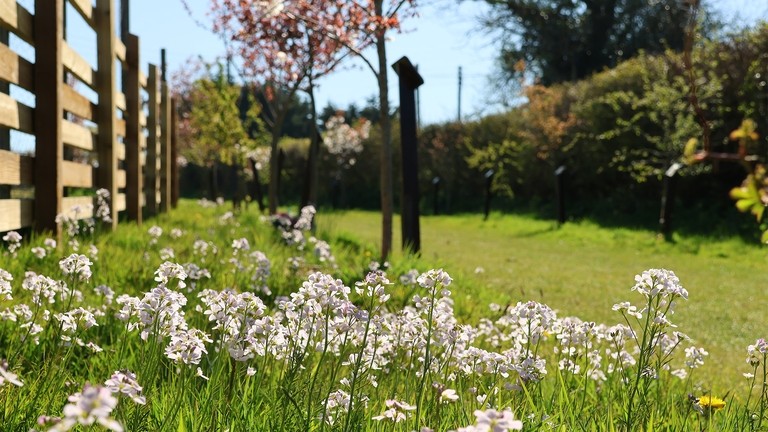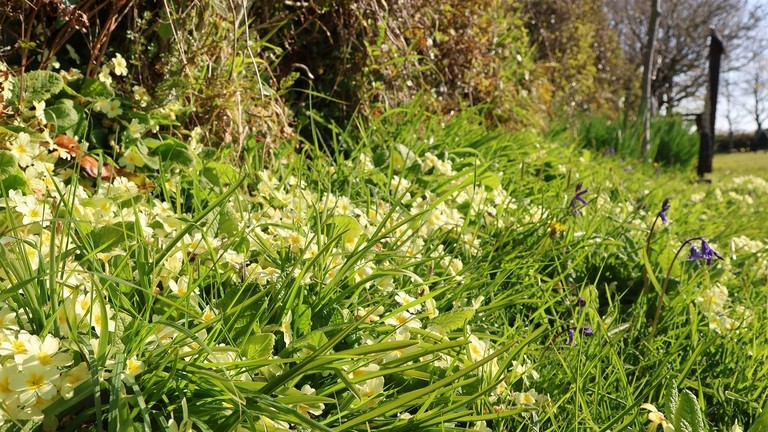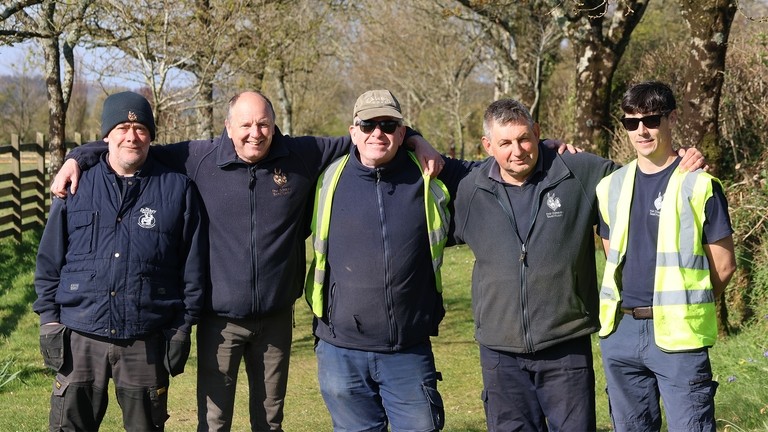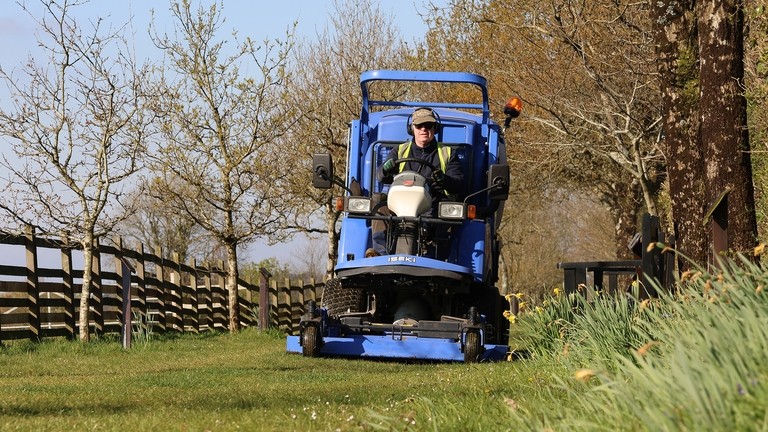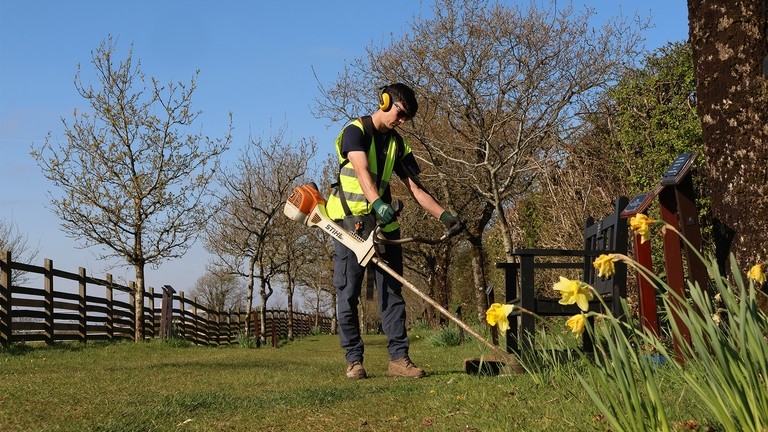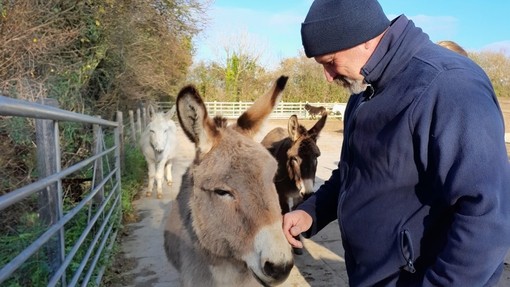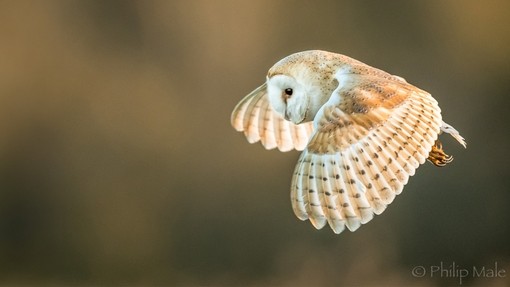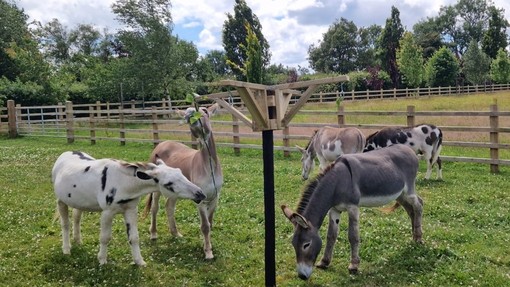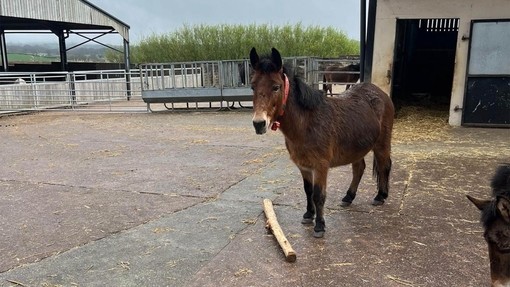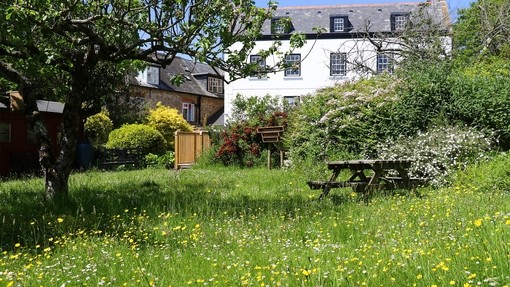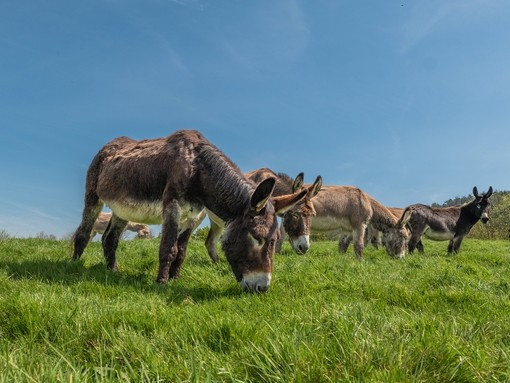
No Mow May
Since 2019, No Mow May has been an annual initiative set up by wild plant conservation charity Plantlife encouraging individuals, councils and organisations to put their lawnmowers away and give wildflowers and other plants the chance to grow as the weather and soil starts to warm up.
For our grounds and maintenance team at our Sidmouth sanctuary, a reduction in their grass cutting starts even sooner, and has already resulted in spring flowers lining the walkways and hedgerows across the sanctuary.
Take a walk along one of the many routes around our donkeys’ paddocks and you’ll spot swathes of delicate cuckoo flowers, verges full with the yellow hues of primrose, and vibrant bluebells heralding the start of early summer.
By giving plants the chance to establish and flourish as we head towards the summer months, pollinators such as bees and butterflies are provided with a valuable food source, while the longer grass is also an important source of food, shelter and breeding sites for many invertebrates. This enriched environment is not only good for nature, it benefits us all, including our resident donkeys.
Over the past few years, Nigel Blackmore and his Weston team have evolved their management of the sanctuary environment, creating the delightful landscape that is enjoyed by staff and visitors alike.
Walkways still need to be managed to allow for safe and level access, while the margins alongside are left longer to help encourage wildflowers. These lead into the natural boundaries allowing for flowers to line the verges right up to where the hedge plants flourish.
Nigel explained: “Our way of managing the grounds have evolved over the years. During lockdown we saw how nature thrived across the sanctuary, and we now tailor our work to ensure the sanctuary meets the aesthetic expectations of our visitors as well as meeting objectives to increase biodiversity by creating a range of conditions for different flower and invertebrate species.”
The No Mow May initiative urges anyone with a garden, no matter how big or small, to help nature grow freely throughout the month. Approximately 97% of flower-rich meadows have been lost since the 1930s, and with them, vital food and habitat needed by wildlife.
Additionally, Nigel’s team, with the help of our Ecology and Conservation colleagues have carefully managed the hedgerows, creating areas along the base of the hedges where wildflowers can now thrive. He added: “There is also the ongoing upkeep of memorial trees, plaques and benches, and providing the access needed by farm staff and visitors.
“Rather than managing everywhere in the same way, we are keen to tailor our wilding approach to create a variety of conditions for different species to flourish. Some species benefit from shorter grass, while others prefer denser vegetation. It’s all about getting the balance right.”
Allowing the walkway grasses and herbs to flower and seed also means that nearby donkey grazing and haylage fields have a suitable seed source to supplement them.
Discover more about our work in environmental rehabilitation
Read moreShare this page
Tags
- News

